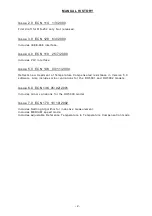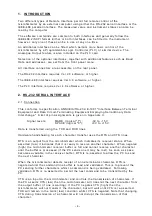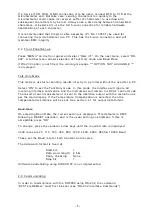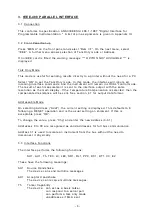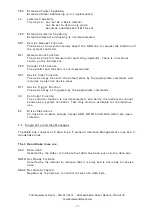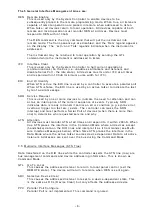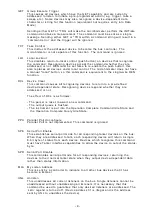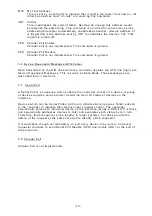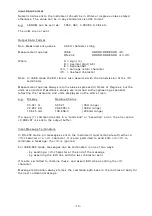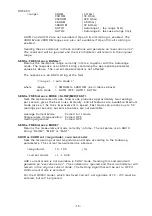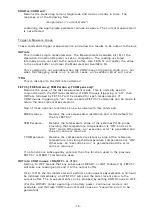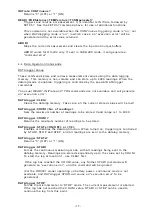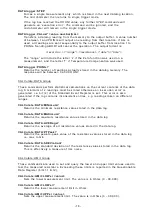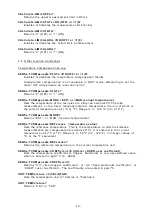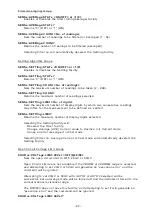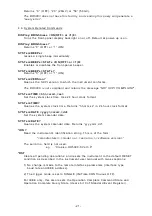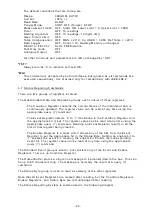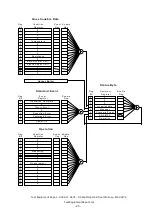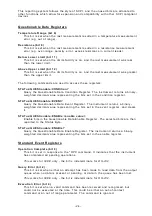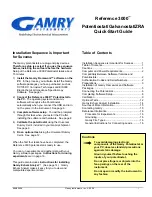
- 9 -
GET
Group Execute Trigger
This causes all devices which have the GET capability and are currently
addressed to listen to initiate a pre- programmed action (e.g. trigger, take a
sweep etc.). Some devices may al so recognise a device-dependent data
character or string for this function (equivalent but requires entry into Data
Mode).
Sending either GET or *TRG will make the microhmmeter perform the INITiate
command and take a measurement. The command must be sent as a single
message. Sending either GET or *TRG within a command string will result in a
‘command error’ and the trigger will be ignored.
TCT
Take Control
This instructs the addressed device to become the bus controller. The
microhmmeter is not capable of this function. The command is ignored.
LLO
Local Lockout
This disables return-to-local control (push button) on devices that recognise
the command. Recognising devices acc ept the command whether they are
addressed or not. REN must be set false to re-enable the push button, this
also replaces all devices under local control. The microhmmeter does not have
a manual "local" button, so this command is equivalent to the single-wire REN
function.
DCL
Device Clear
This command causes all recognising devices to return to a pre-defined
device-dependent state. Recognising devices respond whether they are
addressed or not.
The effect of DCL is as follows:
- The parser is reset to await a new command.
- The output queue is flushed.
- The instrument is put into the Operation Complete Command Idle State and
the Operation Complete Query Idle State.
PPU
Parallel Poll Unconfigure
Parallel Poll is not implemented. This command is ignored.
SPE
Serial Poll Enable
This establishes serial poll mode for all responding talker devices on the bus.
When they are addressed to talk, each responding device will return a single
8-bit byte of status from each device. Devices which recognise this command
must have Talker interface capabilities to allow the device to output the status-
byte.
SPD
Serial Poll Disable
This terminates serial poll mode for all responding devices, returning the
devices to their normal talker state when they output device-dependent data
rather than status information.
MLA
My Listen Address
This is sent by a controller to indica te to all other bus devices that it has
become a listener.
UNL
Unlisten
This unaddresses all current listeners on the bus. Single listeners cannot be
unaddressed without unaddressing all listeners. It is necessary that this
command be used to guarantee that only desired listeners are addressed. The
‘Lstn’ legend is turned off. (Device address 31 is illegal and is the address
sent by UNL to unaddress the device).


